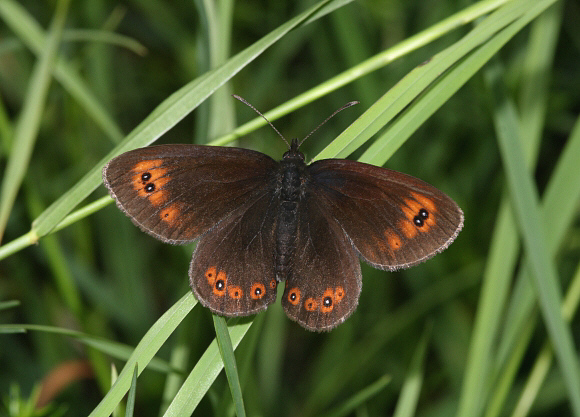 Bright-eyed Ringlet Erebia oeme Trnovac, Gospič, Croatia – Peter Bruce-Jones
Bright-eyed Ringlet Erebia oeme Trnovac, Gospič, Croatia – Peter Bruce-Jones
Introduction
There are about 100 species in the genus Erebia, distributed variously across the Holarctic region, with 46 species recorded in Europe.
Almost all species inhabit damp high altitude grasslands. Most species are dark brown and feature a series of white-centred black ocelli set within a suffused area of orange towards the outer part of both wings. The markings are repeated on the underside but are more subdued.
Erebia oeme is found in the Pyrenees, Alps, Dolomites and Carpathian mountains of Europe.
Habitats
This species inhabits damp meadows and woodland glades where there are tall lush grasses. It occurs at elevations between about 800-2500m.
Lifecycle
The eggs are laid singly at the base of blades of grasses or sedges. The larval foodplants include Poa, Festuca, Carex, Briza and Molinia. The caterpillars normally enter hibernation in the 2nd instar. They overwinter at the base of grasses and may be buried under snow for several months. In the spring they awaken and resume feeding, becoming fully grown by early May. They feed at dusk, high up on the grass blades, leaving nibbled notches which give away their presence.
Adult behaviour
Bright-eyed Ringlets have a weak fluttering flight. Males commonly settle at damp ground to imbibe mineralised moisture, often forming small aggregations with various Mellicta and Pyrgus species.
